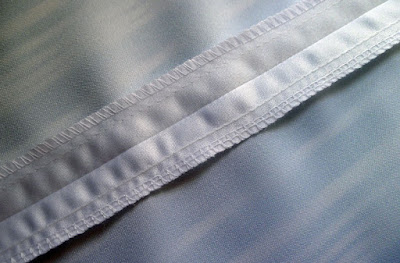Narrow roads, lochs, mountains, the sea, and a pint. The road from Edinburgh to Iona is beautiful no matter the season.
 |
|
Sheep ambling down to the pub at Fionnphort. Photo courtesy Douglas J. Perot.
|
I drove from Edinburgh to Fionnphort just three years ago. This year, I relaxed as others managed logistics. At the Green Welly, one of our party purchased a CD of traditional Scottish songs. Amazing Grace was the last tune, and we all sang as we climbed the last rise to Fionnphort harbor. Single-track roads in the UK can make an atheist pray.
The subtext of this week’s trip has been, “The Scots invented everything,” which seems very nearly true. The Scottish Enlightenmentwas part of a worldwide outpouring of ideas. In Scotland, that took a particularly practical bent. Their chief aim was improvement, virtue, and practical assistance. Matters like lighthouse design were not too plebian for Scotland’s greatest thinkers.
If you head to the Hebrides, you go on a boat operated by Caledonian MacBrayne. This company has been in operation since 1851, although it had a period of government ownership from 1973-2006. As with most ferries, it’s a monopoly. A ditty around here goes:
The Earth belongs unto the Lord
And all that it contains
Except the Kyles and the Western Isles
And they are all MacBrayne’s.
And all that it contains
Except the Kyles and the Western Isles
And they are all MacBrayne’s.
| Eilean Musdile light, designed by Robert Stevenson. Photo by Carol L. Douglas |
Two waters intersect across a bar on the route of the Oban-to-Mull ferry. On either side, there’s a lighthouse standing atop a rock. Eilean Musdile is the larger of these two. It stands at the mouth of Loch Linnhe and has a prehistoric standing stone as well as other ruins. Its lighthouse was built by Robert Stevenson in 1833.
The Stevensons are famous for their literary son, Robert Louis Stevenson, but they were known in their day as great lighthouse engineers. Robert Stevenson learned his trade from his stepfather Thomas Smith, an engineer with the Northern Lighthouse Board. At the tender age of 19 he was entrusted to supervise the Clyde Lighthouse construction on Little Cumbrae in the Firth of Clyde.
 |
|
Bell Rock Lighthouse, 1819, watercolor and gouache on paper, JMW Turner, courtesy Scottish National Gallery
|
His most famous work was the Bell Rock lighthouse. Balanced on a partly-submerged reef, its construction was risky and difficult. It was done so precisely that its masonry has endured for more than 200 years. Robert Stevenson invented the flashing lights that are still used on lighthouses. He also designed and built roads, bridges and other public structures.
In 1797, Stevenson married his step-sister. Three of their sons, Alan, David, and Thomas(RLS’ father), became lighthouse engineers as well. David’s sons carried the lighthouse business into the fourth generation.
 |
| Celtic cross on Iona, under last night’s waxing moon. Photo courtesy Douglas J. Perot. |
Opposite Robert Stevenson’s Eilean Musdile light is the smaller Lady’s Rock, which is submerged at high tide except for its small lighthouse. This rock has a romantic Scottish tale attached to it. Lachlan Cattenach was a Maclean of Duarton nearby Mull. He was unable to father a boy and blamed his wife, Catherine. He left her on the rock to await the incoming tide, taking care that it should look like an accident.
Lachlan duly reported her death to her brother, the Earl of Argyll. Later, the earl invited Lachlan to supper, where the scoundrel found Catherine seated next to her brother at the high table. Lachlan was allowed to leave unharmed, but was later found murdered in Edinburgh.








